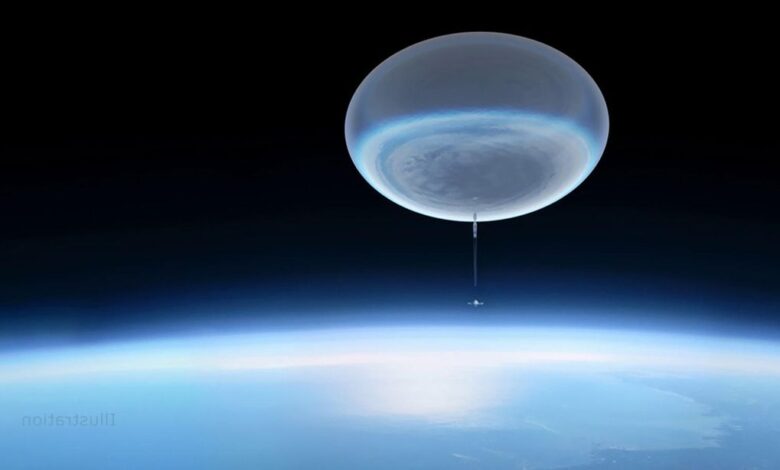ASTHROS will use a telescope to observe wavelengths of light not visible from the ground.
NASA is working on a new mission where it’ll send an 8.4-foot telescope high into the stratosphere aboard a football stadium-size balloon, the space agency said Thursday. ASTHROS (short for Astrophysics Stratospheric Telescope for High Spectral Resolution Observations at Submillimeter-wavelengths), will observe wavelengths of light not visible from the ground. It’s slated to launch in December 2023 from Antarctica, where it’ll drift on air currents above the continent.
ASTHROS will observe far-infrared light, or light with wavelengths that are much longer than what’s visible to humans. That means it’ll need to reach an altitude of around 130,000 feet, or 24.6 miles. That’s still below the boundary of space, but it’ll be high enough to see light wavelengths that are blocked by Earth’s atmosphere, NASA says.
An onboard instrument will measure the motion and speed of gas around newly formed stars. The mission will examine four key targets, including two star-forming regions in the Milky Way. It’ll also map the presence of two types of nitrogen ions, which can “reveal places where winds from massive stars and supernova explosions have reshaped the gas clouds within these star-forming regions,” NASA said in a release.
Through a process called stellar feedback, these violent events can scatter surrounding material and hinder or block star formation. On the other hand, stellar feedback can also drive material to clump together, speeding up star formation. The team hopes to learn more about how stellar feedback works and to offer new information that’ll improve computer simulations of galaxy evolution.
The team recently wrapped up the design for the observatory’s payload, including its telescope, which captures the light, and subsystems such as cooling and electronic systems. Engineers at NASA’s Jet Propulsion Laboratory, which manages the mission, will start to integrate and test those subsystems in early August to ensure they work as intended.
Balloon missions have the advantage of not only costing less than space missions, but the time span between early planning and deployment is shorter, NASA says. That means balloons can handle the risks of new technologies that haven’t been used in space yet, including “unknown technical or operational challenges that can impact a mission’s science output.” Balloon missions offer an opportunity to work through those challenges and help future missions best use these technologies.
“Balloon missions like ASTHROS are higher risk than space missions but yield high rewards at modest cost,” JPL engineer and project manager Jose Siles said in the release. “We’re aiming to do astrophysics observations that have never been attempted before. The mission will pave the way for future space missions by testing new technologies and providing training for the next generation of engineers and scientists.”













![Hotstar Premium Cookies 2019 [*100% Working & Daily Updated*] Hotstar Premium Cookies 2019 [*100% Working & Daily Updated*]](https://tahav.com/wp-content/uploads/2019/11/Hotstar-Premium-Cookies-Free-100x70.jpg)



